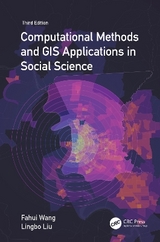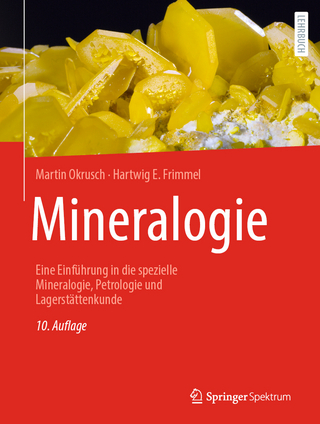
Quantitative Methods and Socio-Economic Applications in GIS
Crc Press Inc (Verlag)
978-1-4665-8472-3 (ISBN)
- Titel erscheint in neuer Auflage
- Artikel merken
See What’s New in the Second Edition:
All project instructions are in ArcGIS 10.2 using geodatabase datasets
New chapters on regionalization methods and Monte Carlo simulation
Popular tasks automated as a convenient toolkit: Huff Model, 2SFCA accessibility measure, regionalization, Garin-Lowry model, and Monte Carlo based spatial simulation
Advanced tasks now implemented in user-friendly programs or ArcGIS: centrality indices, wasteful commuting measure, p-median problem, and traffic simulation
Each chapter has one subject theme and introduces the method (or a group of related methods) most relevant to the theme. While each method is illustrated in a special case of application, it can also be used to analyze different issues. For example, spatial regression is used to examine the relationship between job access and homicide patterns; systems of linear equations are analyzed to predict urban land use patterns; linear programming is introduced to solve the problem of wasteful commuting and allocate healthcare facilities; and Monte Carlo technique is illustrated in simulating urban traffic.
The book illustrates the range of computational methods and covers common tasks and major issues encountered in a spatial environment. It provides a platform for learning technical skills and quantitative methods in the context of addressing real-world problems, giving you instant access to the tools to resolve major socio-economic issues.
Fahui Wang
PART I. GIS AND BASIC SPATIAL ANALYSIS TASKS.Chapter 1. Getting Started with ArcGIS: Data Management and Basic Spatial Analysis Tools. Chapter 2. Measuring Distances and Time. Chapter 3. Spatial Smoothing and Spatial Interpolation. PART II. BASIC QUANTITATIVE METHODS AND APPLICATIONS. Chapter 4. GIS-Based Trade Area Analysis and Applications in Business Geography. Chapter 5. GIS-Based Measures of Spatial Accessibility and Application in Examining Healthcare Access. Chapter 6. Function Fittings by Regressions and Application in Analyzing Urban and Regional Density Patterns. Chapter 7. Principal Components, Factor Analysis and Cluster Analysis and Application in Social Area Analysis. PART III. ADVANCED QUANTITATIVE METHODS AND APPLICATIONS. Chapter 8. Geographic Approaches to the Small Population Problem and Application in Cancer Data Analysis. Chapter 9. Spatial Statistics Analysis and Applications in Toponymical and Crime Studies. Chapter 10. Linear Programming and Applications in Examining Wasteful Commuting and Allocating Healthcare Providers. Chapter 10. Linear Programming and Applications in Examining Wasteful Commuting and Allocating Healthcare Providers. Chapter 12. The Cellular Automata Model and Application in Simulating Urban Growth. Chapter 12. The Cellular Automata Model and Application in Simulating Urban Growth. Reference. Index.
| Zusatzinfo | 29 Tables, black and white; 99 Illustrations, black and white |
|---|---|
| Verlagsort | Bosa Roca |
| Sprache | englisch |
| Maße | 156 x 234 mm |
| Gewicht | 1350 g |
| Themenwelt | Geisteswissenschaften ► Psychologie |
| Naturwissenschaften ► Geowissenschaften ► Geografie / Kartografie | |
| Sozialwissenschaften ► Soziologie ► Spezielle Soziologien | |
| ISBN-10 | 1-4665-8472-6 / 1466584726 |
| ISBN-13 | 978-1-4665-8472-3 / 9781466584723 |
| Zustand | Neuware |
| Informationen gemäß Produktsicherheitsverordnung (GPSR) | |
| Haben Sie eine Frage zum Produkt? |
aus dem Bereich



